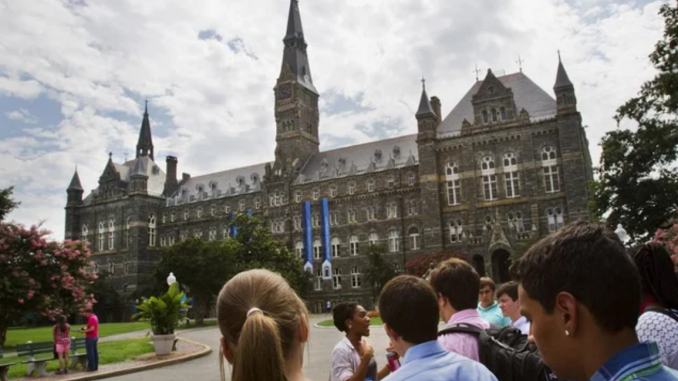
Civil liberties groups say their efforts to fight censorship on college campuses are increasingly facing schools that weaponize discrimination and harassment policies to silence unwanted expression.
Colleges are now using so-called “no-contact orders” as de facto speech codes to prevent people from engaging in constitutionally protected expression, according to Tyson Langhofer, director of the Alliance Defending Freedom’s Center for Academic Freedom.
“That’s a new phenomenon that we’re seeing, where they’re essentially saying that they have a duty to protect students from speech they don’t like, and they’re willing to actually issue a no-contact order, basically a restraining order, against that,” Mr. Langhofer said. “And that’s a new phenomenon that’s very concerning because it’s being driven by the students, and the universities are just capitulating to that.”
ADF’s Center for Academic Freedom has litigated against more than a dozen colleges and universities in the last year. It touts a near 90% success rate challenging alleged violations of students’ First Amendment rights since its founding in 2006.
The religious liberty organization known for its Supreme Court advocacy has recently found itself tussling with officials at Southern Illinois University-Edwardsville and the University of Idaho who have issued no-contact orders.
ADF is suing Southern Illinois officials over alleged First Amendment violations against student Maggie DeJong, whose social media posts on politics, religion and race prompted the school to issue no-contact orders on behalf of three offended students in her graduate program.
The school ordered Ms. DeJong to not have any contact or “indirect communication” with her classmates, according to ADF’s lawsuit.
The school later rescinded the orders after being contacted by attorneys, ADF said.
SIUE spokesperson Megan Wieser said the university does not comment on pending litigation, and she said censorship is not an institutional objective.
“There is a delicate balance required of all citizens as we engage in productive and respectful dialogue involving diverse viewpoints,” Ms. Wieser said in an email. “Balancing the two deeply valued principles of free speech and ensuring a non-hostile environment, in real-time, is what makes universities like SIUE special.”
Mr. Langhofer said schools previously used free-speech zones to physically isolate speakers sharing messages that administrators and students disliked. Now, he’s finding that the no-contact orders are becoming more popular.
Foundation for Individual Rights and Expression Executive Director Robert Shibley said his organization has witnessed the shift too. He views the new mood on campus as reflective of students’ changing beliefs.
“When I started at FIRE almost 19 years ago, students were very reliably allies of free speech,” Mr. Shibley said. “We could basically, in every case, turn to students who would speak up for the right of the fellow student to say things that dissented from the campus mainstream, and while I think most students still do believe in those rights, that’s certainly not the vocal segment now.”
FIRE said earlier this month that it was rebranding to replace “education” in its name with “expression” as it embarks on off-campus advocacy focused on censorship outside of schools. The organization has mounted a $75 million campaign focused on litigation, research and public education with an initial $10 million spent on advertising online, on cable television and on billboards.
The group sees gaps in the free speech arena that it wants to help fill, and it is not alone. Speech First, another advocacy group legally challenging efforts to shut down speech, said last week it helped cause the University of Houston to change its harassment policy that allegedly allowed the school to punish students for off-campus speech.
The group said it secured a settlement of $30,000 from the university as well.
* Article from: The Washington Times